I just started reading this thread, so I won't comment just yet, but I noticed in the Imatest chart that you used a Gamma 2.20, where it is supposed to be 0.454545 (or 0.5, which is also close enough for most comparisons). Just wanted to warn at this stage, before I got through reading everything said so far.
Good catch, Bart. I've no idea how that got there, but I fixed it and reran
Imatest on a series of slanted edge pictures with lambda = 550 nm, and a diffraction-limited f/8 lens with Q starting at 1 and increasing by a factor of sqrt(2) to 5.7 (hey, why is it that our lenses aren't labeled f/5.7 instead of f/5.6?).
Here is the same MTF50 and MTF30 data plotted against three ways of looking at sensel density:
First vs Q:
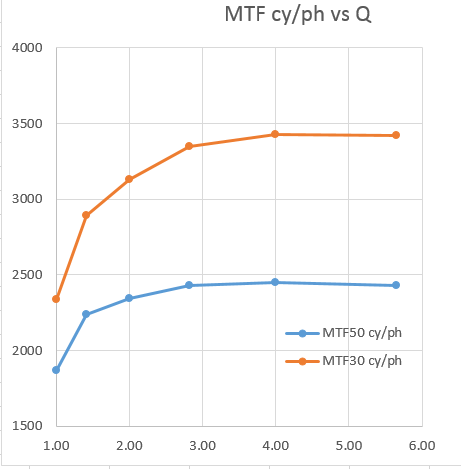
Then vs picture height in pixels for a 36x24mm sensor:
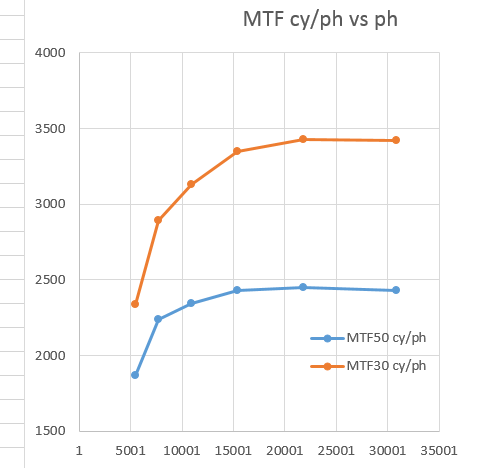
And vs sensor megapixels for a 36x24mm sensor:
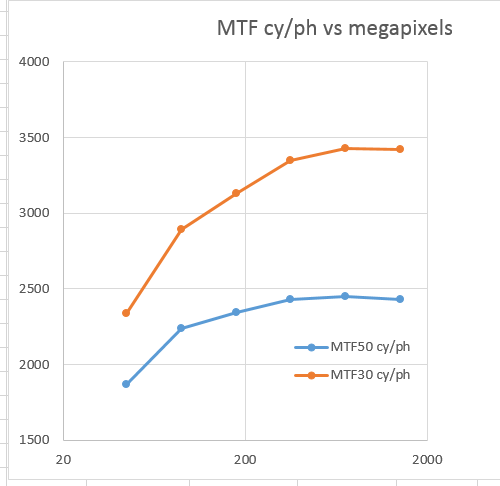
Here is the Q=1 Imatest plot, showing plenty of aliasing:
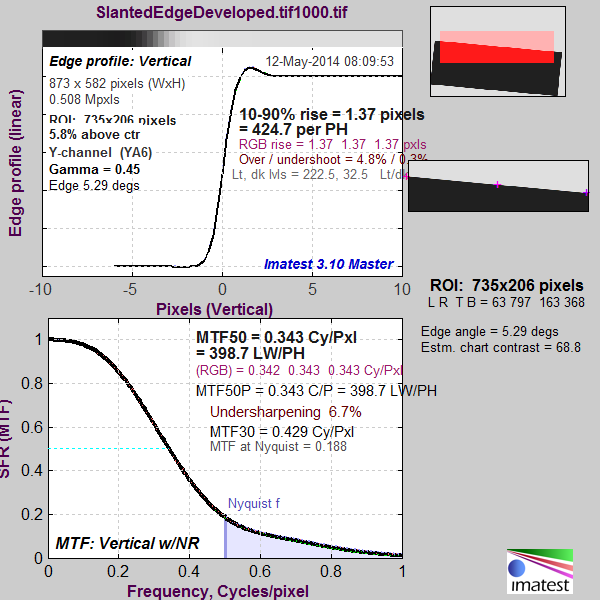
And here's the Q=2 Imatest plot, showing much less as the lens diffraction acts as a pretty good AA filter:
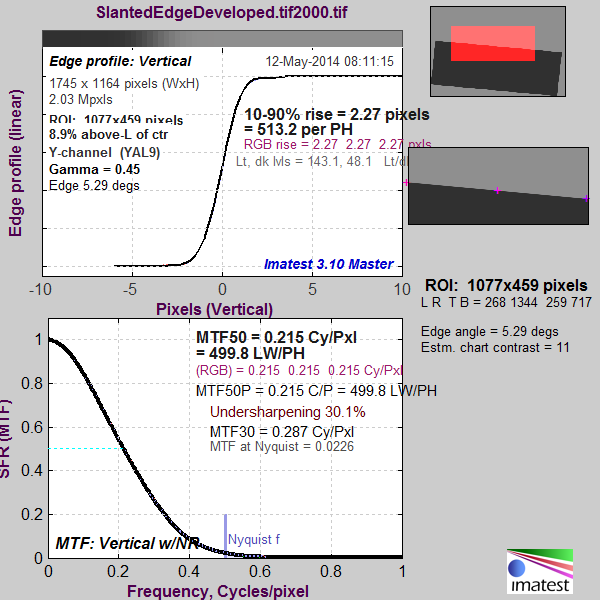
Note that the AA filtering isn't perfect, as it would be in a monochromatic sensor, one with no CFA.
I don't know why Imatest shows different contrast in the thumbnails of the two images; I checked teh files and the contrast is identical.
Jim